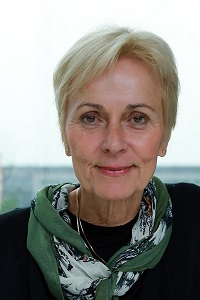Christine Mummery is Professor of Developmental Biology at Leiden University Medical Center. She was president of the International Society of Stem Cell research 2020-21. With stem cells she develops organ-like models to seek potential drug targets.

Professor Christine Mummery
Elisabetta Citterio
In Leiden University Medical Center, Christine Mummery heads the facility for induced pluripotent stem cells (iPSC). In 2008, she became Chair of Developmental Biology at Leiden University Medical Centre and was department head from 2009-2020. Her current research concerns modelling cardiovascular diseases using stem cells from patients and developing organ-on-chip models of multiple organs, organoids, for safety pharmacology and drug targets.
She co-founded the European Organ on Chip Society and the Netherlands Human Disease Modelling Technology organization. She was founding editor of the ISSCR journal Stem Cell Reports. She was awarded numerous research grants for her outstanding ideas, such as two European Research Council grants and is member several scientific boards and Science Academies, such as the Royal Netherlands Academy of Science.
Further information: Christine Mummery - Leiden University Medical Center
Potential and limitations in applications of human stem cells and organoids
Stem cells can be most simply described by dividing them into three types, depending on their origin: adult stem cells from tissues of the body able to repair or replace cells lost by turnover or damage; embryonic stem cells derived from preimplantation embryos and induced pluripotent stem cells generated by reprogramming somatic cells to a pluripotent state. Each have their own capacity to self-renew, to form different cell types by differentiation and replicate properties of fetal or adult tissue. For this reason their potential biomedical applications are often distinct although there is considerable overlap between those of embryonic- and induced pluripotent stem cells. Their different origins mean that there are different ethical issues associated with their use, whilst their different capacities to differentiate give rise to a different set of ethical issues. Adult stem cells only form cell types of their tissue or organ of origin and they have properties similar to cells in the adult body. They can be used to model disease and for cell therapy in regenerative medicine but cannot be derived from all organs (eg the heart). By contrast, embryonic- and induced pluripotent stem cells can form all cell types of the human body, including brain, heart and germ cells, but the differentiated derivatives are generally immature and characteristically fetal-like. At present, this limits their use in disease modeling but in general benefits their use in cell transplantation and therapy. Whilst embryonic- and induced pluripotent stem cells have many properties in common, the reprogramming procedure used to derive induced pluripotent cells make their use in therapy higher risk than using embryonic stem cells. The ethical burden associated with embryonic stem cells, however, may make induced pluripotent stem cells nevertheless a preferred choice. The limitations and benefits of these different stem cell types will be discussed, also in the context of the recent „Guidelines for Stem Cells in Research“ by the International Society of Stem Cell Research in June 2023.